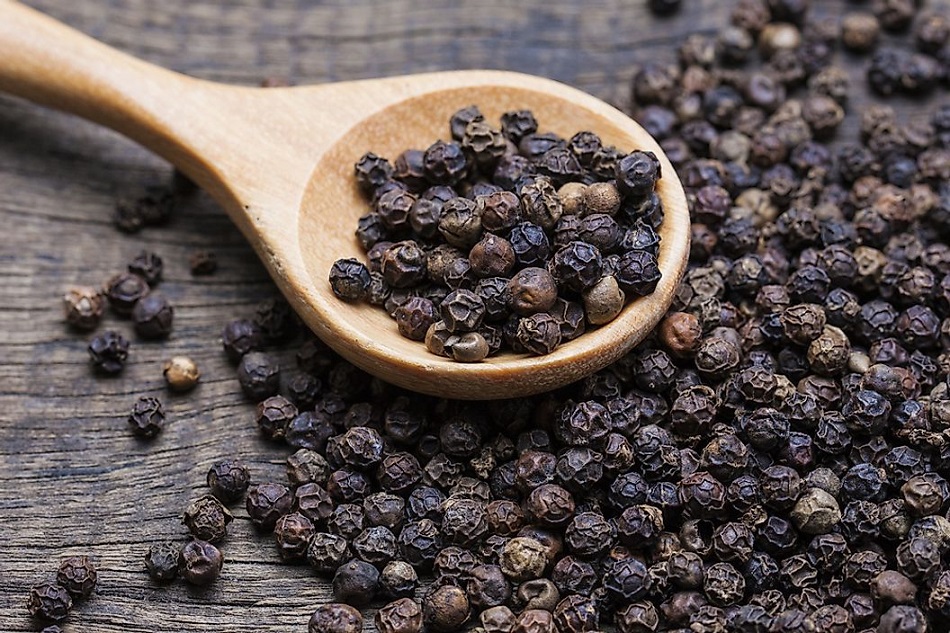Mr Harry Ta

Mr Sephilon Dinh

Ms Jenny Trinh

Mr Hoang Ta

February 8, 2021
Viet Nam, Indonesia, and India are the leading producers of black pepper which is widely used for seasoning and as a spice. The plant is indigenous to the southern region of India, and it thrives in tropical climates. Since ancient times, black pepper has been renowned as a useful spice, and it spread from India through trade to the rest of the world.

Vietnam is the world leader in the cultivation and production of black pepper, with 148,744 hectares in 2018. It is a traditional crop of the country and 95% of the black pepper produced is for export mainly to the US, India, the Netherlands and Germany. India is the second largest producer with 138,566 hectares of planted land while Indonesia has 117.9 hectares. Other countries on the list are Sri Lanka (40.241 ha), Brazil (30.503 ha), Malaysia (17.437 ha).
| Pepper area of the main producing countries in the world | Unit: ha | |||||||||||
| Year | Brazil | India | Indonesia | Malaysia | Sri Lanka | Viet Nam | China | Thailand | Cambodia | Others | Total | |
| 2001 | 39.000 | 218.670 | 159.884 | 13.400 | 30.794 | 36.106 | 15.700 | 2.892 | 2.500 | 522.946 | ||
| 2002 | 41.000 | 222.460 | 160.606 | 13.1.00 | 31.387 | 42.000 | 16.000 | 2.890 | 3.000 | 536.434 | ||
| 2003 | 50.000 | 223.060 | 184.000 | 13.000 | 31.970 | 48.800 | 17.000 | 2.800 | 3.000 | 577.630 | ||
| 2004 | 45.000 | 231.880 | 171.000 | 13.000 | 32.437 | 50.000 | 18.000 | 2.800 | 3.000 | 571.117 | ||
| 2005 | 40.000 | 231.800 | 150.000 | 12.700 | 24.739 | 50.000 | 19.000 | 2.800 | 3.000 | 538.039 | ||
| 2006 | 35.000 | 253.730 | 140.000 | 12.235 | 29.156 | 50.000 | 20.000 | 2.800 | 3.000 | 549.921 | ||
| 2007 | 32.857 | 236.180 | 113.002 | 13.023 | 29.910 | 50.000 | 16.625 | 2.787 | 3.000 | 501.384 | ||
| 2008 | 29.549 | 196.297 | 114.570 | 13.487 | 30.156 | 50.000 | 16.567 | 2.060 | 700 | 3.000 | 459.686 | |
| 2009 | 27.415 | 181.299 | 113.683 | 13.608 | 30.528 | 50.000 | 16.749 | 2.142 | 800 | 3.000 | 442.424 | |
| 2010 | 23.263 | 182.000 | 110.620 | 15.000 | 30.931 | 51.000 | 17.498 | 1.991 | 850 | 3.000 | 439.303 | |
| 2011 | 21.089 | 189.100 | 110.900 | 15.000 | 31.926 | 52.500 | 16.568 | 1.210 | 900 | 3.000 | 444.663 | |
| 2012 | 19.427 | 196.200 | 112.850 | 14.791 | 31.667 | 54.500 | 17.125 | 734 | 1.500 | 3.000 | 454.924 | |
| 2013 | 18.472 | 197.000 | 113.000 | 15.000 | 31.997 | 61.500 | 17.425 | 412 | 2.300 | 3.000 | 461.806 | |
| 2014 | 20.000 | 198.000 | 115.000 | 16.000 | 31.296 | 85.500 | 18.188 | 412 | 2.700 | 3.000 | 492.390 | |
| 2015 | 22.110 | 198.500 | 116.000 | 16.300 | 31.670 | 97.500 | 19.000 | 500 | 4.600 | 3.000 | 507.460 | |
| 2016 | 25.660 | 131.790 | 117.000 | 16.700 | 34.997 | 105.000 | 20.000 | 500 | 6.100 | 3.000 | 517.220 | |
| 2017 | 27.730 | 134.280 | 117.500 | 17.000 | 36.221 | 151.982 | 20.000 | 500 | 6.700 | 3.000 | 458.731 | |
| 2018 | 30.503 | 138.566 | 117.900 | 17.437 | 40.241 | 148.744 | 20.000 | 500 | 7.471 | 2.800 | 479.419 | |
| 2019* | 27.850 | 140.000 | ||||||||||
The pepper plant thrives in hot and humid tropical climates, and it can reach a height of 33 feet. However, under cultivation, the plant is restricted to a maximum height of 13 feet. The ideal annual rainfall for the plant is 200 cm while the temperatures range from 10 to 40 degrees Celsius. The plant grows well in soil rich in humus and well drained with a pH ranging from 5.0 to 6.5. Cultivation can either be done through cuttings or by use of seeds. Cuttings are preferred over seeds in commercial cultivation since they require a shorter period to grow. The pepper plant has a climbing nature and planting is done against a support such as a pole or a tree. After 3 to 4 years the plant bears small flowers on pendulous spikes. The fruits are produced in the fifth year, and harvesting commences once one or two fruits appear red which mostly happens after six or seven months. Handpicking is the common method of harvesting. The spikes are spread out in the sun until the berries shrivel and turn dark. The berries are then stripped off the spikes and are packaged as whole or in grounded form.